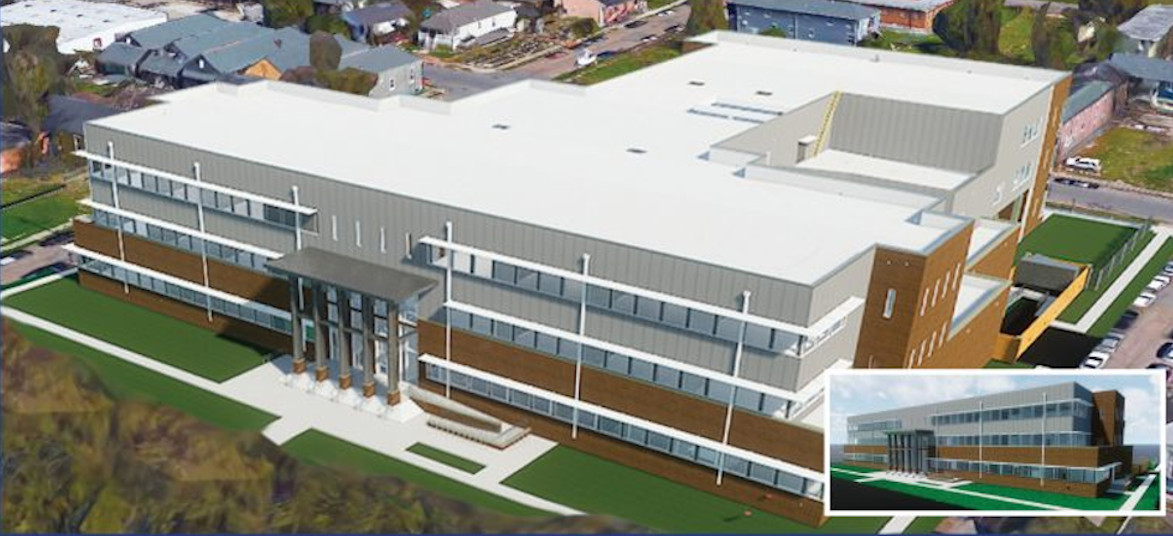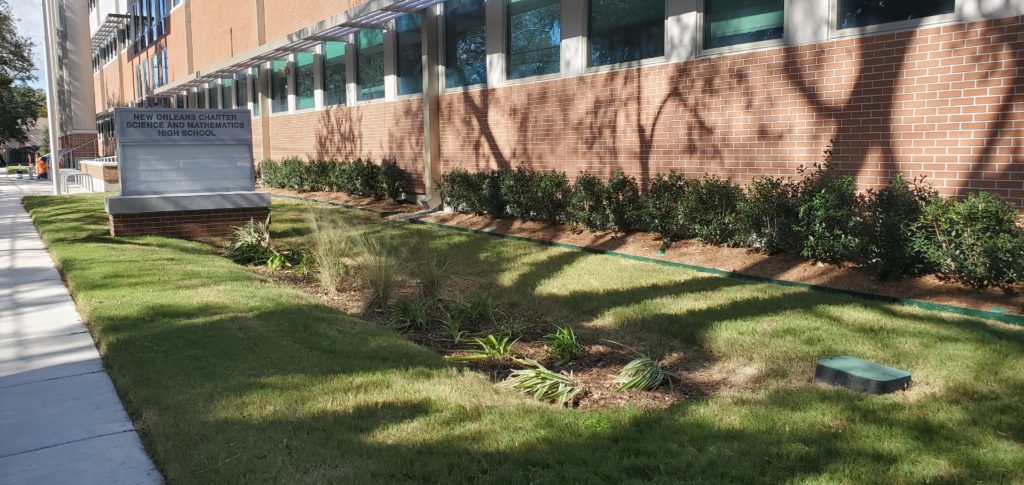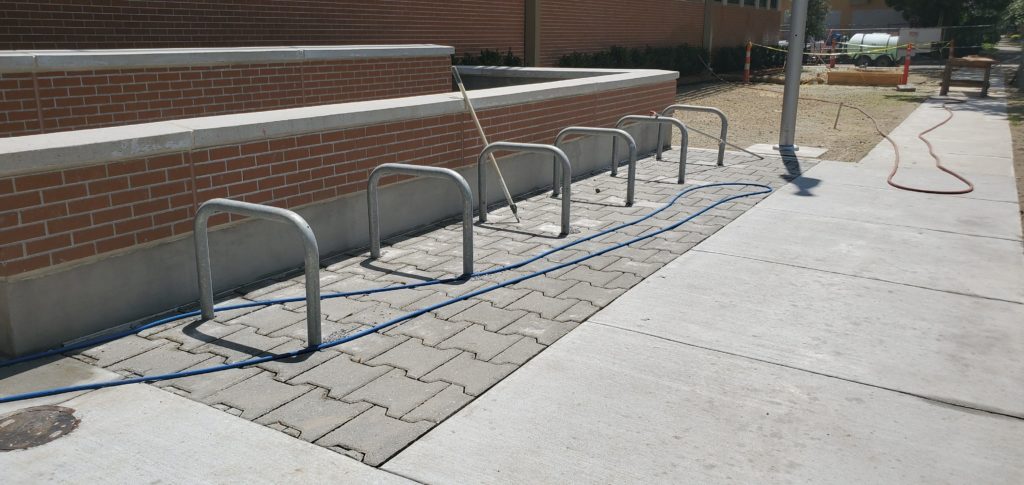
Modern School Gets Modern GSI Solutions
SPECIAL UPDATE: May 10, 2022
Project Winner of the 2021 CMAA Gulf Coast Chapter Project Achievement Award
After a bit of a delay, we have been notified that the project design and development team has won a 2021 CMAA Gulf Coast Chapter Project Achievement Award for its work on the New Orleans Charter Science and Mathematics High School (Sci High).
Several years ago, leaders of the New Orleans Charter Science & Mathematics High School said they needed a new campus. Officials have now cut the ribbon on a $27.5 million building in the city’s medical and biosciences corridor. The three-story, 129,716-square-foot building has the capacity for 750 high school students and comes equipped with an outdoor learning space, science laboratories, visual art labs, advanced tech classrooms and a media center. Green Stormwater Infrastructure (GSI) was included in the design of the outdoor space, including permeable concrete pavers and high performance biofiltration with expanded, modular underground detention.
The front lawn was the ideal location to place two high performance biofiltration systems, known as FocalPoint. The flexibility of the system allowed the civil engineer, Duplantis Design Group (DDG), to expand the underdrain to promote infiltration, while minimizing the surface footprint. The underdrain is comprised of R-Tanks, which are modular units that have a 95% void capacity. The addition of the biofiltration systems provided a unique solution for the design team. Rather than tying the rooftop downspouts directly to the underground drainage, the gutters are disconnected at the surface. Stormwater runoff from the rooftop splashes down at the surface and meanders its way to the biofiltration systems. After the runoff gets filtered through mulch, plant roots, and engineered soil, it drains into the R-Tank underdrain that extends beyond the footprint of the biofiltration system. The additional footprint and storage capacity provide time and space for water to soak into the native soil before it enters the city storm sewer.
DDG took advantage of the high flow rate of FocalPoint to make maintenance simple. The 100 in/hr flow rate can manage more volume per square foot (SF) than traditional bioretention. This project required two systems: one covering 110 SF of surface area, and another covering 30 SF. The remaining area outside of the FocalPoints is grass, while mulch and plants are installed within the FocalPoints. The maintenance regime consists of mowing, trash removal, and mulch replacement once a year, which will allow the school to rely on its own maintenance crews rather than sourcing out specialized labor.

Even though high performance biofiltration is not common on every project, the construction process is simple, and most commercial contractors have the capability to self-perform. Construction EcoServices (CES) partnered with Durr Heavy Construction, while working under the general contractor, McDonnel Group. After Durr completed excavation and installed the stone subgrade, CES installed R-Tanks. Since the FocalPoint is smaller than the R-Tank, wood forms were built to contain the bridging stone and engineered soil until the entire R-Tank could be backfilled with sand. Total construction time was 1 week for both systems.
Another innovative method DDG used was the integration of interlocking, open‑joint permeable pavers called PowerBlock. Each interlocking block is 4.5 inches thick and 1 SF in area, making them larger than your traditional paver. And, unlike most permeable pavers, they do not use aggregate infill. The clear space between the blocks allows water to flow unimpeded into the aggregate subgrade at a rate of 1,000 in/hr. The open joints also make maintenance simpler and more effective, since clogged material is easier to remove without aggregate infill. PowerBlock was installed underneath two bike rack areas, one of which was located directly underneath a gutter opening.

These two innovative methods of stormwater management will now provide an educational opportunity for every student. Since most drainage work is underground, it is often overlooked and forgotten. These two elements of Green Infrastructure design and their above ground footprints will be seen by the students daily, reminding them that there are modern, low impact stormwater management solutions at work preventing flooding and improving water quality.








